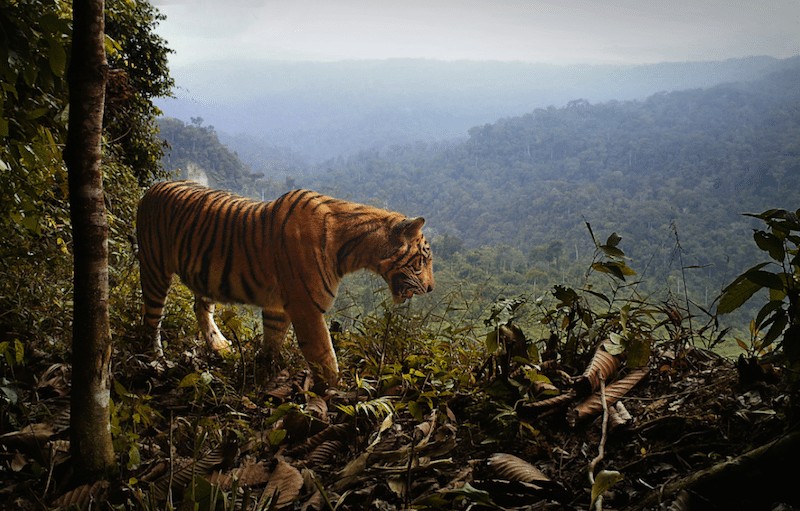
An endangered breed of tiger is “clinging to survival” due to the destruction of its forest habitat, warns new research.
Living only on the Indonesian island of Sumatra, the Sumatran tiger – officially listed as “Critically Endangered” – is the only surviving sub-species of ‘Island tigers’ which included the now-extinct Javan and Bali tiger.
Conservationists say Sumatran tigers face “many challenges” to their continued existence in the wild, where they require a home range of 25,000 hectares (61,776 acres).
These include being poached for their skin, bones and other body parts, involvement in conflict with people, a depleted prey base, and habitat loss.
A research expedition tracked the endangered tigers through the Sumatran jungles for a year and found they are “clinging to survival” in low density populations.
The findings have renewed fears about the possible extinction of the elusive predators.
Tigers on the neighboring islands of Java, Bali, and Singapore went extinct in the 20th century, prompting new anti-poaching efforts to prevent the same fate for the subspecies on Sumatra.
The efforts have largely been successful as the density of tigers has increased over last two decades and their numbers are twice as high in unlogged forests, according to the findings of the latest study published in the journal Nature Communications.
But researchers also found that well-protected forests are disappearing and are increasingly fragmented.
Of the habitat tigers rely on in Sumatra, 17 per cent was deforested between 2000 and 2012 alone, erasing any gains to the tigers’ chance of survival, according to the research team.
They said habitat destruction for oil palm plantations was a leading culprit of deforestation.
Study lead author Matthew Luskin, who conducted the research for his graduate studies at the University of California, Berkeley, said: “Our results are a mixed bag.”
Doctor Luskin, now a research fellow with the Smithsonian Institution and based at Nanyang Technological University in Singapore, added: “The loss of key habitat is causing significant conservation challenges for Sumatra – and in particular for this critically endangered species.”
The researchers spent 12 months trekking through remote Sumatran forests, mounting hundreds of remote cameras that take pictures and video whenever an animal passes.
Individual tigers are identified by their unique pattern of stripes, allowing the researchers to track their movement.
With information from the cameras, the scientists calculated a Sumatran tiger’s home range to be roughly 150 square miles, about three times the size of San Francisco and much larger than tiger home ranges in other regions such as India.
The study found that tiger densities are 47 per cent higher in primary versus logged forests and that extensive clearing of pristine lowland forest has disproportionately reduced tiger numbers.
Between 1990 and 2010, Sumatra lost 37 per cent of its primary forest. As a result, researchers said that tiger subpopulations also became “significantly more fragmented” – greatly increasing their threat of extinction in each individual forest.
The research team combined their results with data from other scientists and estimated the number of tigers in each remaining forest in Sumatra.
They found that there are now only two habitats large enough to host more than 30 breeding females, an indicator of viable tiger populations over the long term.
Dr Luskin added: “The erosion of large wilderness areas pushes Sumatran tigers one step closer to extinction.
“We hope this serves as a wake-up call.”
Co-author Doctor Mathias Tobler, of San Diego Zoo Global, said: “Safeguarding the remaining expanses of primary forests is now absolutely critical to ensuring tigers can persist indefinitely on Sumatra.”
He added: “Largescale reforestation is unlikely.
“If we are going to save Sumatran tigers in the wild, the time to act is now.”
https://www.thelondoneconomic.com/news/climate-change-poses-greatest-threat-medium-sized-predators-foxes-forces-spend-time-hunting-food/04/12/
https://www.thelondoneconomic.com/news/new-study-shows-pigeons-can-abstract-thoughts/04/12/